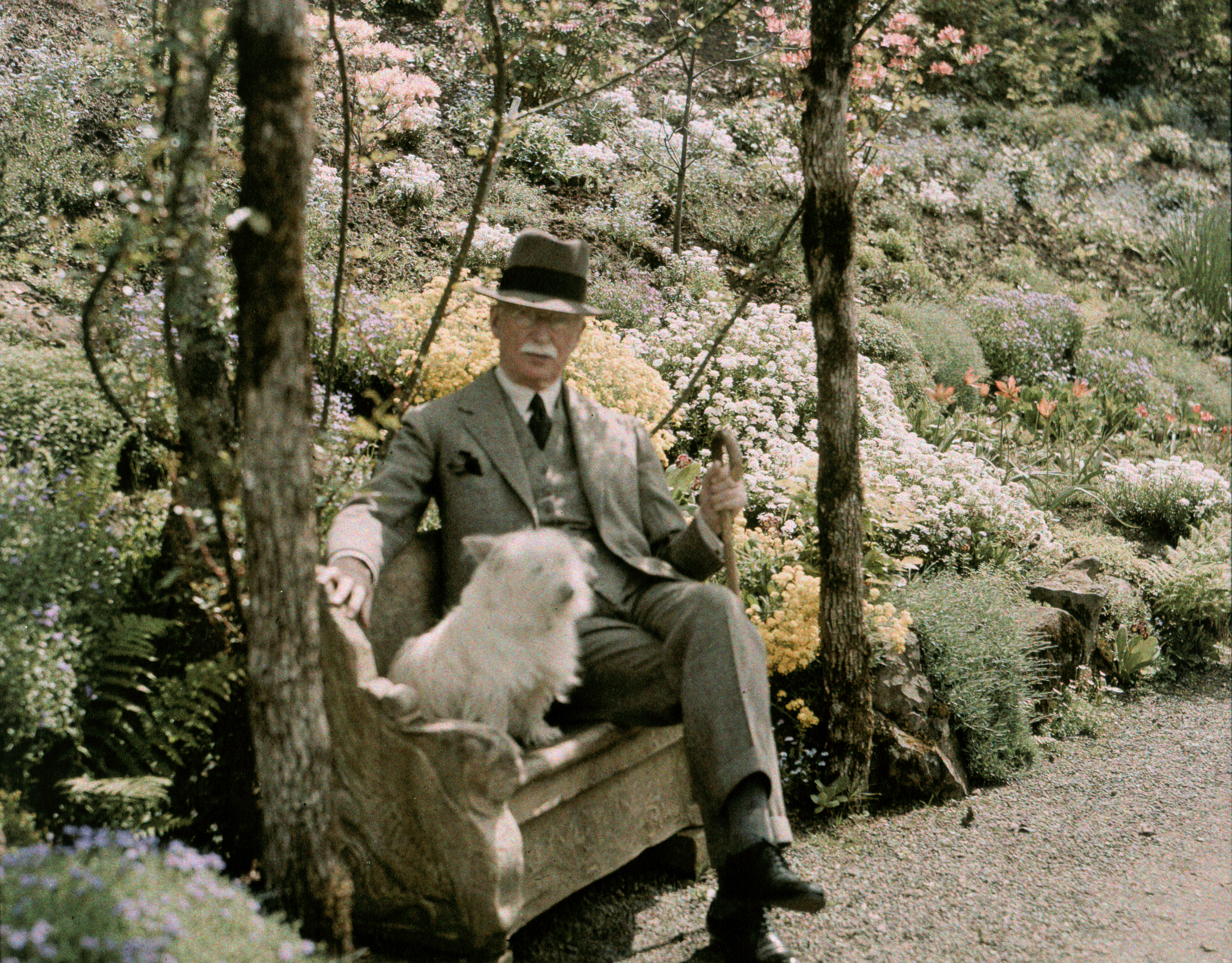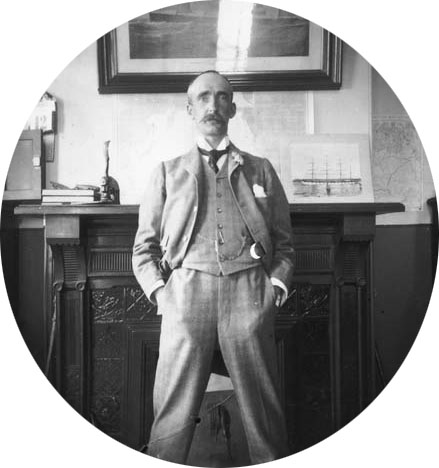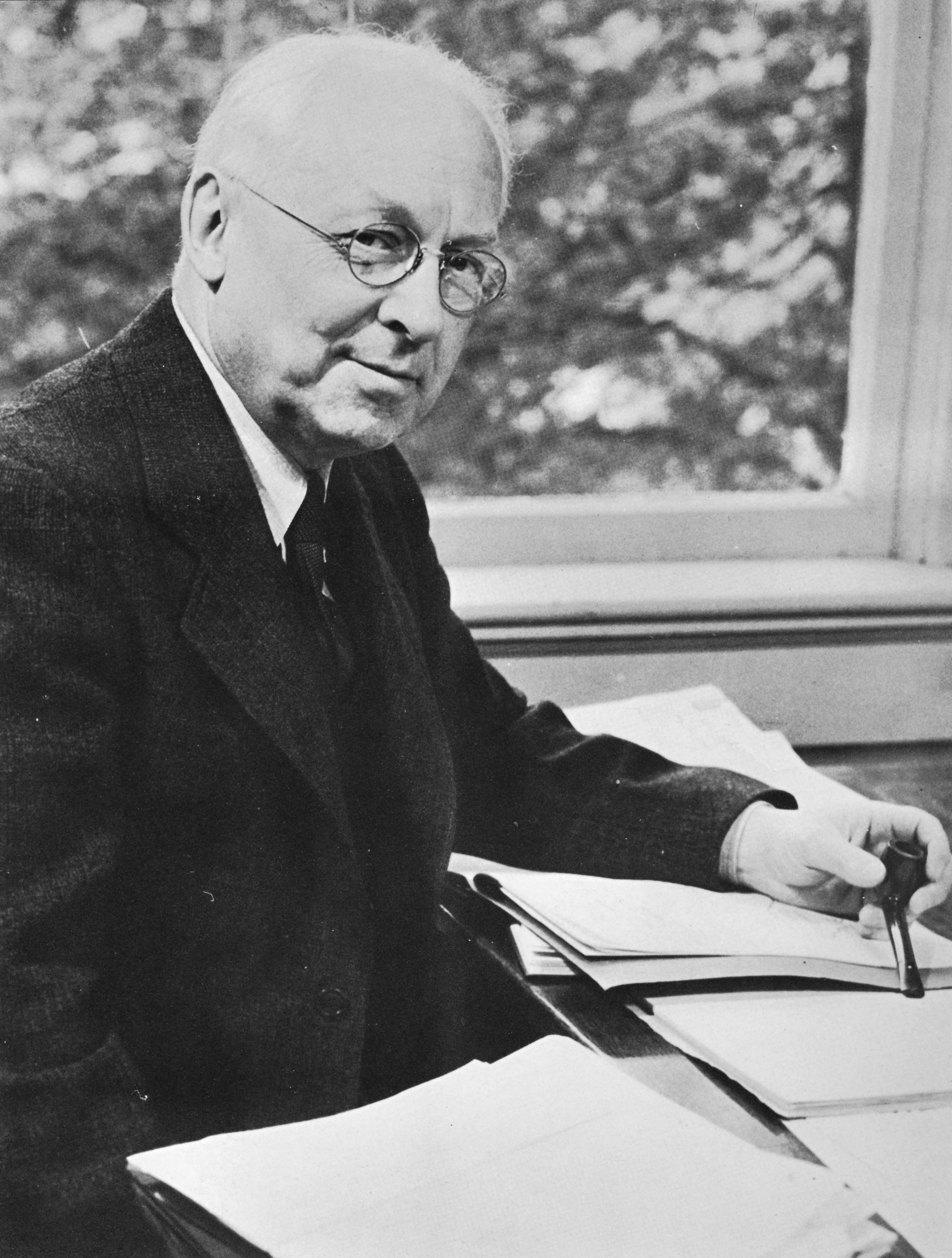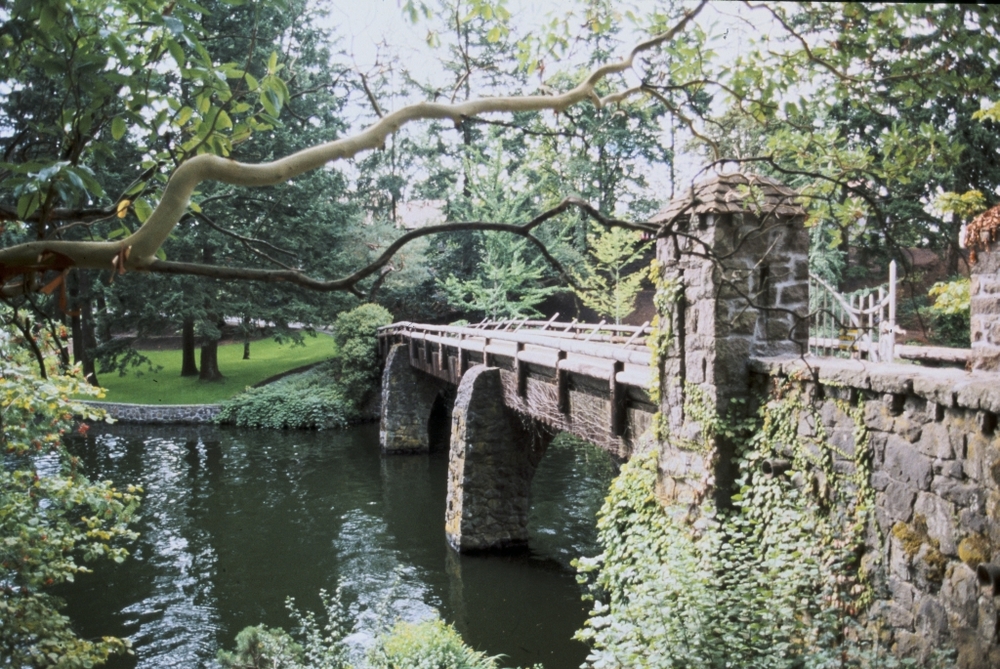Peter Kerr, a prominent businessman in the early twentieth century, was known as the “Patriarch of the Pacific Northwest wheat trade” for his role connecting farmers in eastern Oregon and Washington with global markets.
Born on October 29, 1861, in Newton Stewart, Scotland, Kerr was one of eight children. After completing his education at the village school at age fourteen, he began a three-year apprenticeship in his father’s Clydesdale Bank. He transferred to its London office and, at age eighteen, began an eight-year tenure at the global commodities exchange firm, Dewar & Webb, where his uncle James Dewar was a partner. He submitted his resignation in July 1888 because he lacked the capital to become a partner and was frozen in his position as a high-level clerk. Three weeks later, the partners offered to send him to Portland, Oregon, as their representative.
After stops in New York City, Chicago, and Minneapolis, Kerr arrived in Portland on October 10, just before his twenty-seventh birthday. For three months, he lived in a boarding house but took his meals at the Arlington Club as a guest of his future business partner, William Sibson. Leaving Portland, he managed Dewar & Webb’s office in San Francisco (six months), New Zealand and Australia (eighteen months), and Buenos Aires (six months). In late 1892, Dewar & Webb reassigned him to Portland, where he lived for the rest of his life.
Kerr returned to the Pacific Northwest during the panic of 1893, a global economic recession that lasted for several years. He faced unregulated competition in commodities trading from international companies such as Balfour Guthrie, as well as from local challengers, primarily Theodore “T.B.” Wilcox. The firms were battling for access to the wheat that was just beginning to pour into the market from farms in north-central and northeastern Oregon and Washington. Kerr’s experience in banking, grain trading, and shipping served him well, however, as did financial underwriting from Dewar & Webb.
The firm of Sibson & Kerr was launched in September 1893, and within three years Kerr’s younger brother Tom and Patrick Gifford, a friend from Newton Stewart, had joined the firm. The two men served as buyers and managed the Tacoma branch of the business, while Peter Kerr and Sibson oversaw operations from Portland. In 1896, Sibson & Kerr joined with T.B. Wilcox to buy a chain of upcountry grain warehouses. The venture was a disaster, leading to lawsuits, the dissolution of Sibson & Kerr, and the founding of Kerr, Gifford & Company in August 1899.
Peter Kerr married Portland-born Laurie King in 1905. Their two daughters, Anne and Jane, were born at Cliff Cottage, the family’s home at Elk Rock, above the Willamette River between Portland and Lake Oswego. In 1909, Kerr asked John C. Olmsted of New York to evaluate the thirteen-acre garden he had been working on for twelve years. Six years later, architect Ellis F. Lawrence designed a new house, modeled after a Presbyterian manse in Scotland and carefully sited, per Olmsted’s earlier suggestion, within the existing landscape.
The grain-trading business remained volatile, and Kerr, Gifford & Co. struggled for grain and ships with their competitors on the Pacific Coast. The stress took its toll on Kerr’s health and morale, and by 1913 he offered to sell his Elk Rock property and garden, close the business, and return to England. As Europe was caught up in World War I, however, the company experienced a turnaround. The change in fortune may have been because of a significant grain deal or to the death of Major Bridges Webb, a partner in Dewar & Webb, and the settlement of a debt owed by Kerr, Gifford. Whatever the reason, by early 1915, the company’s fortunes had improved and continued for the next four decades.
In 1953, at the age of ninety-two, Kerr retired, selling his company to the Cargill Corporation of Minnesota for almost five million dollars. He died at Elk Rock on April 17, 1957. Laurie Kerr moved into a new house designed by John Storrs, located above the garden. When she died in 1959, the family gave the house and garden to the Episcopal Bishop of Oregon. The garden, open to the public, is now known as Elk Rock Garden.
-
![Peter Kerr at Elk Rock Gardens, about 1925.]()
Elk Rock Gardens, Peter Kerr with dog.
Peter Kerr at Elk Rock Gardens, about 1925. Oreg. Hist. Soc. Research Lib.
-
![Peter Kerr, about 1898, likely in his Portland, Oregon, office.]()
Kerr, Peter, ca 1898.
Peter Kerr, about 1898, likely in his Portland, Oregon, office. Oreg. Hist. Soc. Research Lib., Kerr-1073
Related Entries
-
![Elk Rock Garden]()
Elk Rock Garden
The Garden at Elk Rock (formerly known as The Bishop’s Close) on the Wi…
-
![Ellis F. Lawrence (1879-1946)]()
Ellis F. Lawrence (1879-1946)
Portland architect Ellis Fuller Lawrence was the leading organizer of h…
-
![Lake Oswego]()
Lake Oswego
Lake Oswego is a suburban city located eight miles southwest of Portlan…
Related Historical Records
Map This on the Oregon History WayFinder
The Oregon History Wayfinder is an interactive map that identifies significant places, people, and events in Oregon history.
Further Reading
The Garden at Elk Rock. A Photographic Journal of the Elk Rock Garden at the Bishop's Close.
The Bishop's Close Garden at Elk Rock. Portland Parks Foundation.
Glauber, Carol. "A look at the Veracious Chronicles of the Cliff Cottage Club." Oregon Historical Quaterly 109:1 (Spring 2008), 128-144.





